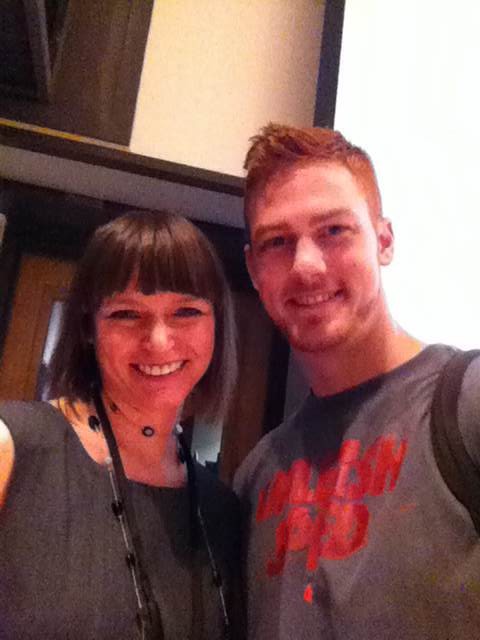But first, let me take a selfie
Student Voice writer Niki Barnes takes a selfie with Katherine Zoraster after her seminar ‘Selfies: Self Portrait in the Age of Facebook.’
April 17, 2014
Selfies, a new trend, or just a twist on what artists have done throughout history? Katherine Zoraster gave a history of self-representation and how the selfie came to be so widely used.
Self-portraits are nothing new, with forms of self-representation dating back to cave paintings around 30,000 BCE. One of the first self-portraits was done in Egypt in 1365, where a sculptor created a piece representing himself and his wife.
Artists began doing self-portraits as a way to practice, and also free advertisement of their talents.As art became more popular and artists became more and more renown, self-portraits were used more often.
Artists became more comfortable with their public status, and the number of self-portraits increased. Zoraster showed slide after slide of artists painting self-portraits, beginning as early as 1433.
In 1839, the first selfie was taken by Robert Cornelius, who used the newly invented kodak camera. At this time most self-portraits using cameras were still restricted to artists and aristocrats. But as technology made cameras cheaper and easier to use, the public began taking more pictures, and more selfies.
Now with even phones having cameras, selfies have become a huge part of our self-representation as a culture. Whether this is good or bad is up to you.
Selfies give the ability for us to choose how we want to be seen.
“We have quite a bit of control over how we present ourselves,” said Zoraster.
But these self-portraits can also show something that isn’t necessarily true.
“Selfies blur the line between what is reality and what is on our Facebook feed,” said Zoraster.
In the Mar. 2014 Glamour Magazine, a reported 68 million pictures had been posted on Instagram with the hash tag selfie.
These selfies affect the way we see our self and the way we see others.
Good, bad, or just awkward, selfies are a part of our culture.






